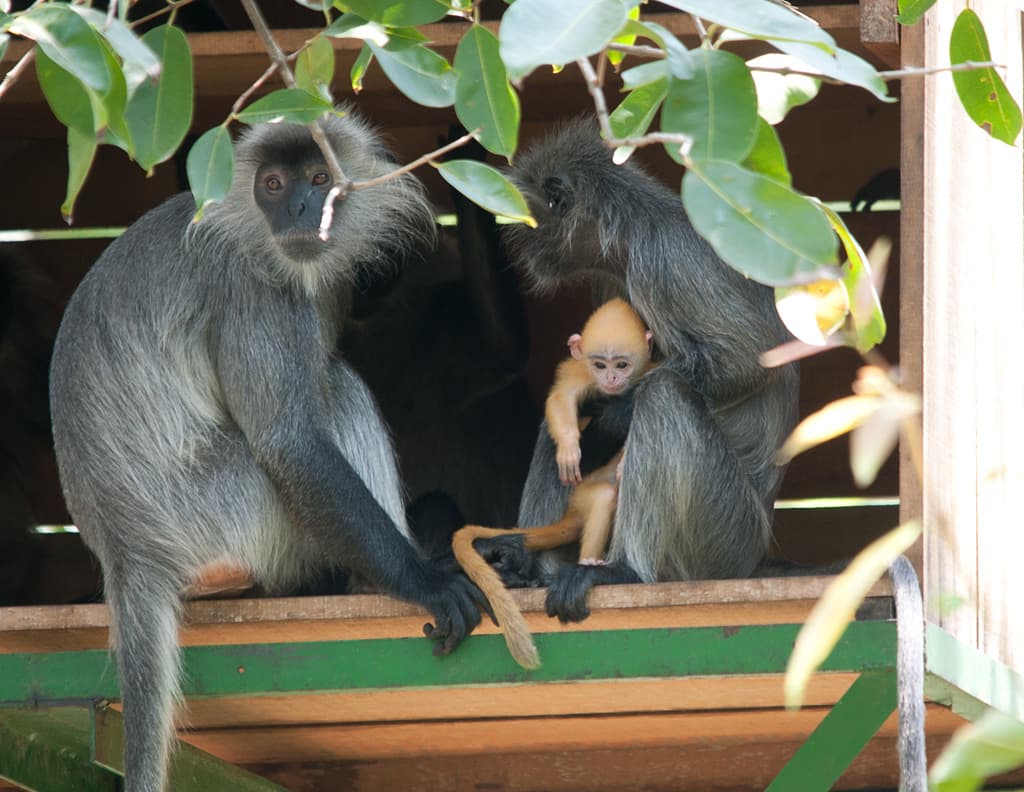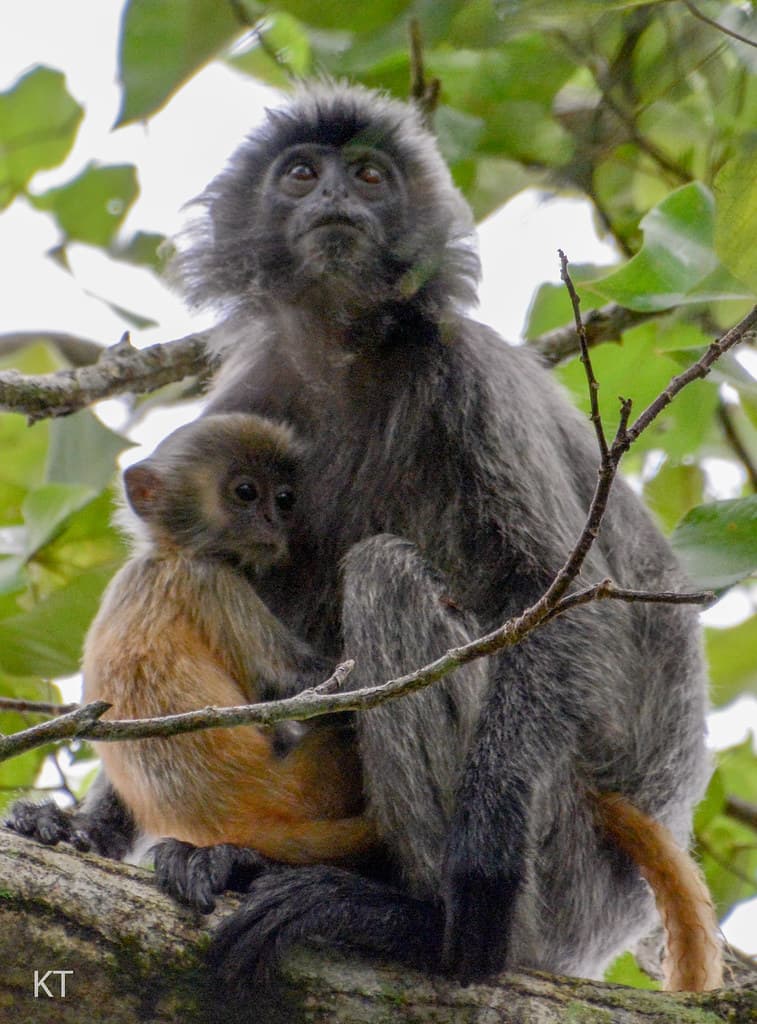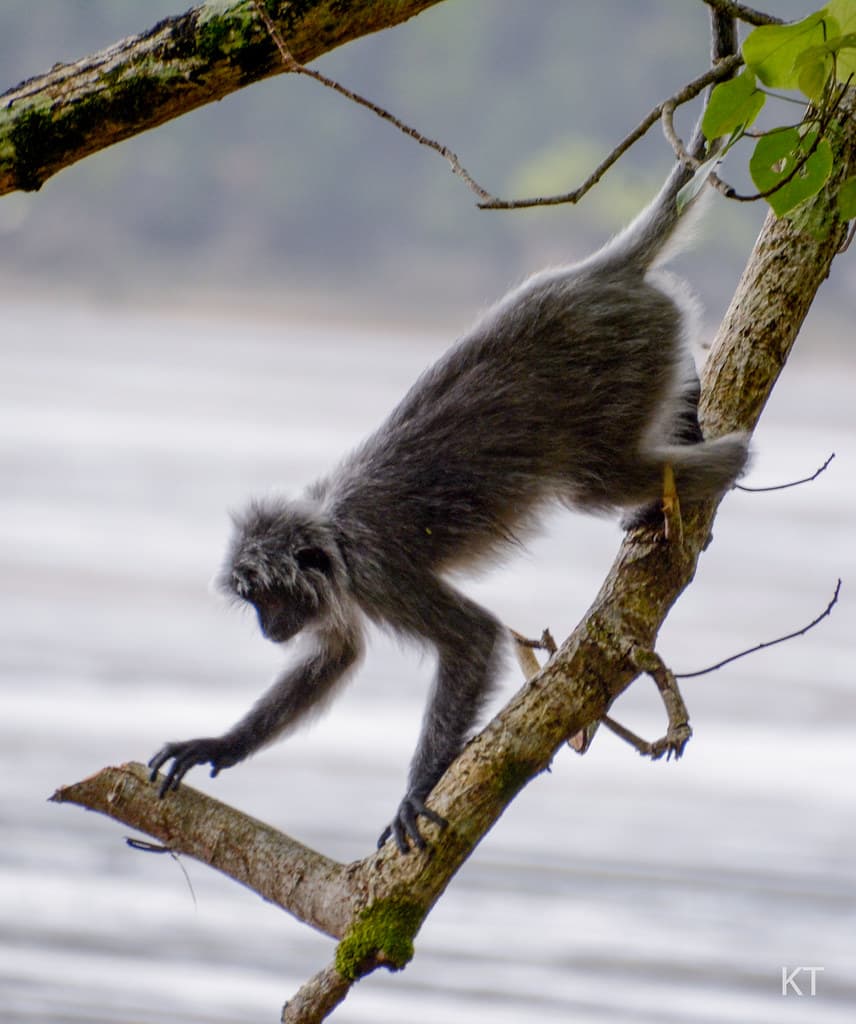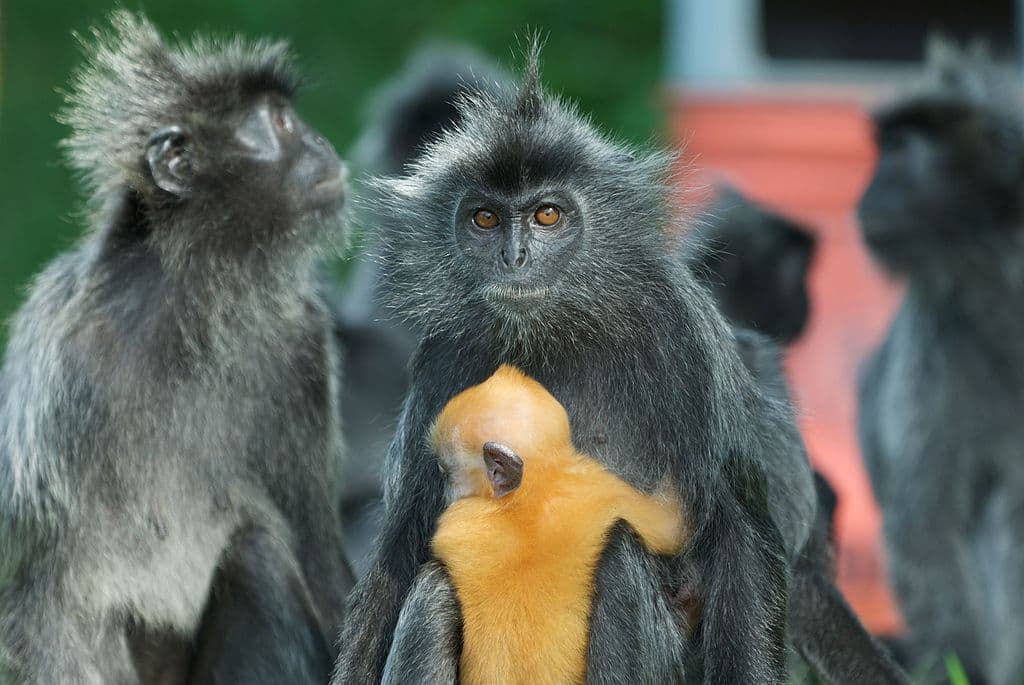Silver leaf monkey is the Old World Monkey that not many Cambodian people have seen or even known. The appearance of this primate is rather unique, and their habits are quite interesting. This species is one of the monkeys that is threatened by hunting and illegal pet trade. Before we know it, they will probably be extinct in the near future which is very unfortunate. If you do not know about the silver leaf monkey, feel free to check out about them below.
Appearance

A silver leaf monkey is from 46 to 58 centimeters long, with males being slightly larger than females. Both sexes have a long non-prehensile tail with a gray tip with dark brown or black fur that is around 67 to 75 centimeters. If you look at the head, you can see a crest of fur running along the top of the head. Silver leaf monkeys also have long hair on their cheeks but their hands and feet are hairless. And not different from many other monkeys, this one also has opposable thumbs and toes.
Females give birth to a single young after a gestation period of 6 to 6.5 months. The most fascinating thing about them is that baby silver leaf monkeys are born with orange fur. This bright color is to make it easy for parents to see if their baby wanders around. Orange is also a less visible color to colorblind predators out there which helps keep the baby safe. They also have white hairless skin on the face, hands, and feet, and this color will change to darker color in 3 to 5 months.
Behavior

This primate is social, and they travel in groups of around 9 to 40 members under a harem-based social structure. The one adult male leads the group while the rest of the members are adult females and infants. Females stay in the group for life but males will leave shortly after reaching adulthood. Those juvenile males will live in small groups of their own until they can take over an established harem.
As arboreal animals, they rarely leave the trees to be safe from ground-dwelling predators. Right before sunrise, the adult male will lead the troop to set out to forage throughout their territory. They communicate with each other, defend their territories, and express themselves by using vocal, making at least 13 different vocalizations. When things get serious, males will also chase away males from other groups, and fighting behaviors like biting, pulling, and slapping are involved.
Feeding & Habitats

As a specialist folivore, their diet consists mainly of leaves; however, they also feed on flowers, fruits, and seeds. Along with that, silver leaf monkeys are fond of ground plants, leaf buds, shoots, and vines. The habitats of this arboreal monkey species are coastal, mangrove, and riverine forests in Peninsular Malaysia and Southeast Asian countries. At the same time, they also inhabit mangrove swamps and nearby forest regions where they can find food.
Predators & Research
Dholes, large snakes, leopards, and tigers are the predators that hunt adult silver leaf monkeys. When not careful enough, infants of this species often fall prey to small carnivores in the forests. The thing about silvery leaf monkeys is that they are susceptible to human diseases, including AIDS. It is uncommon for them to be widely used in medical research. This is one of the reasons why their population is considered Vulnerable on the IUCN Red List. Apart from that, habitat loss due to logging, hunting for meat, and illegal pet trade are also the causes.
Related Post: Long-Tailed Macaque Facts
